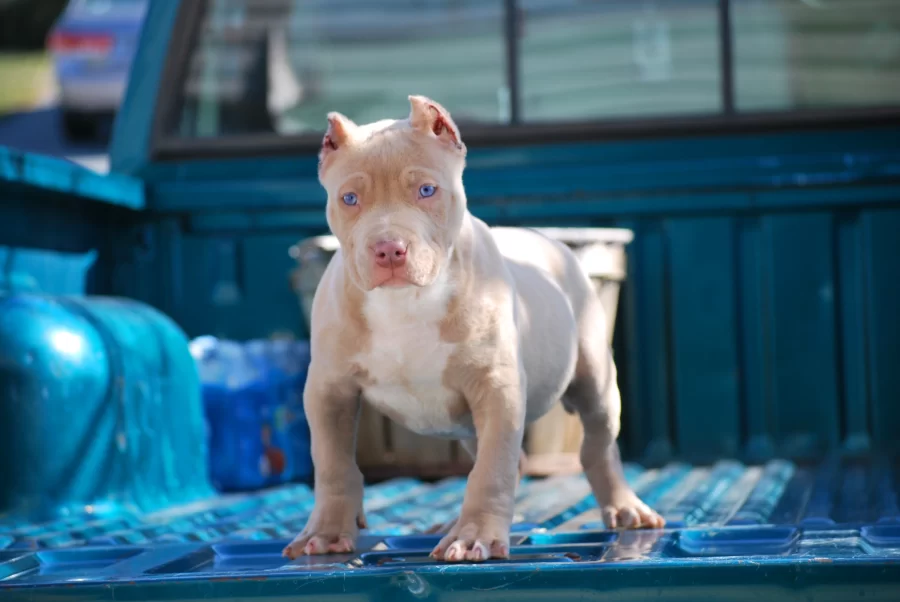Are you a proud pitbull owner, but you need to know if your furry friend is a purebred or a mix? Look no further! In this ultimate guide, we'll walk you through the process of identifying if your dog is a purebred pitbull mix. Whether you adopted your dog from a shelter or bought them from a breeder, it's important to know their heritage and potential health conditions that may arise.
Identifying a purebred pitbull mix can be a challenge, especially since there are various types of pitbulls and numerous breed combinations. However, by examining physical characteristics, behavior traits, and genetic testing, you can determine the true lineage of your precious pooch.
Our expert tips and insights give you the knowledge and tools to identify if your dog is a purebred pitbull mix confidently. So, grab your magnifying glass and let's embark on this exciting journey of discovering your canine companion's heritage. It's time to unravel the mystery behind your pup's bloodline!
Understanding purebred dogs and mixed breeds
Purebred dogs have been selectively bred for specific physical and behavioral traits, resulting in a distinct and recognizable breed. These dogs are typically registered with kennel clubs, such as the American Kennel Club (AKC), which maintain detailed records of their lineage and ensure the purity of the breed. Purebred dogs are often prized for their predictable characteristics, including appearance, temperament, and health.
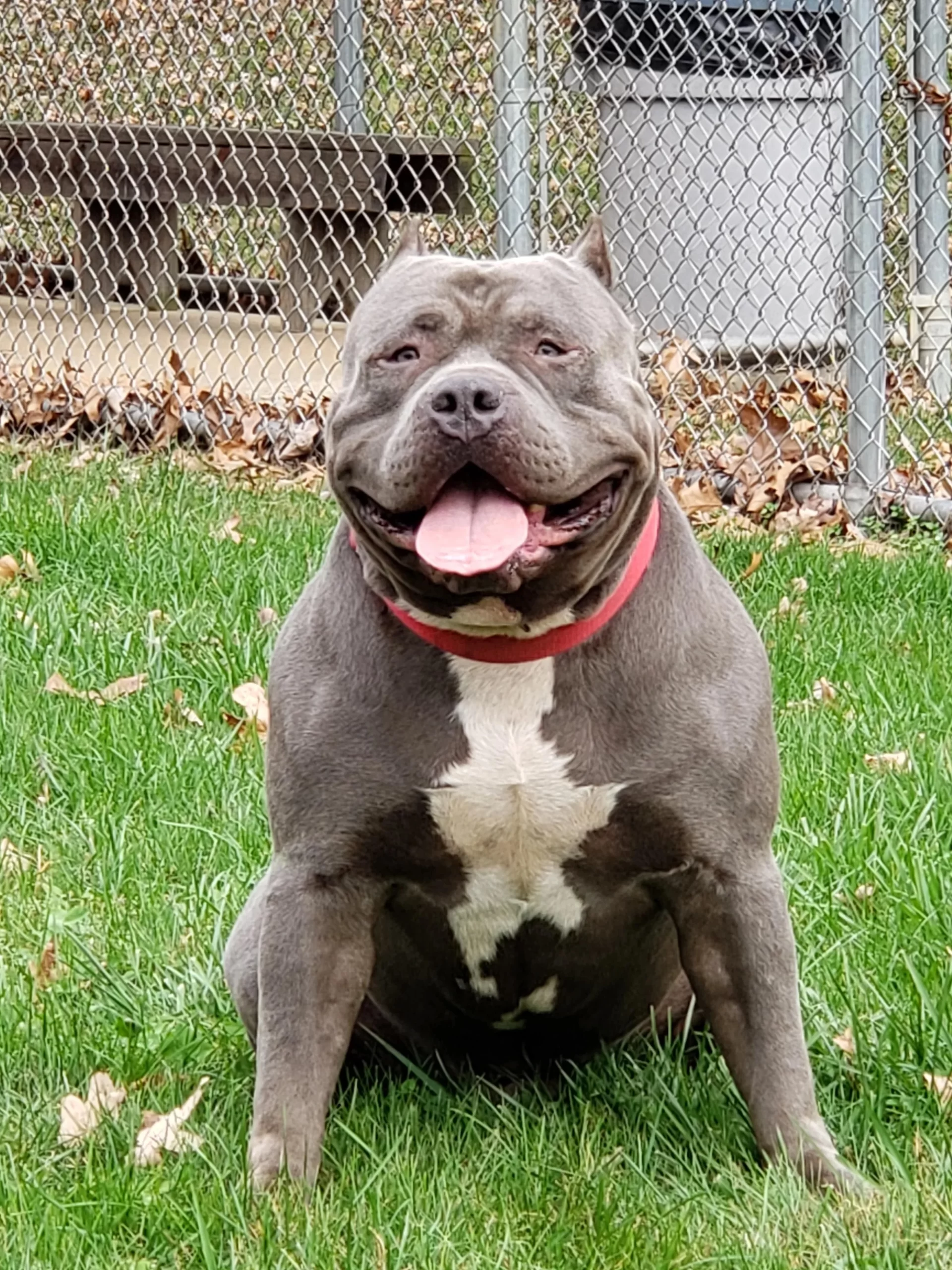
On the other hand, mixed-breed dogs are the result of breeding between two or more different breeds. These dogs are often referred to as "mutts" or "hybrid" dogs. While they may not have the same level of predictability as purebreds, mixed-breed dogs can exhibit a unique blend of traits from their various ancestral breeds. They can be just as loving, loyal, and healthy as their purebred counterparts, and many people find great joy in the unpredictability and diversity of mixed-breed dogs.
Identifying the breed composition of a mixed-breed dog can be a fascinating and challenging task. By examining the dog's physical features, behavior, and genetic makeup, it is possible to get a better understanding of their ancestry and the specific breeds that contributed to their unique appearance and personality.
This knowledge can be valuable in understanding the potential health concerns, grooming needs, and training requirements of the dog, as well as in providing a deeper appreciation for the rich diversity of the canine world.
What is a Pitbull and its characteristics?
The term "Pitbull" is often used to describe a group of related breeds, including the American Pitbull Terrier, American Staffordshire Terrier, and Staffordshire Bull Terrier. These breeds share a common heritage and were originally developed for blood sports, such as bull and bear baiting, in the 19th century.
Pitbulls are known for their muscular build, broad heads, and strong jaws. They typically stand between 16 and 21 inches tall at the shoulder and weigh between 30 and 70 pounds, depending on the specific breed and individual dog. Pitbulls come in a variety of coat colors, including brindle, solid, and patched patterns.
In terms of temperament, Pitbulls are often described as loyal, affectionate, and energetic. They are generally friendly towards people, including children, and can make excellent family companions. However, it's important to note that Pitbulls, like any breed, can exhibit aggressive behavior if they are not properly socialized and trained. Responsible ownership and early socialization are crucial for ensuring the well-being of both the dog and the people around them.
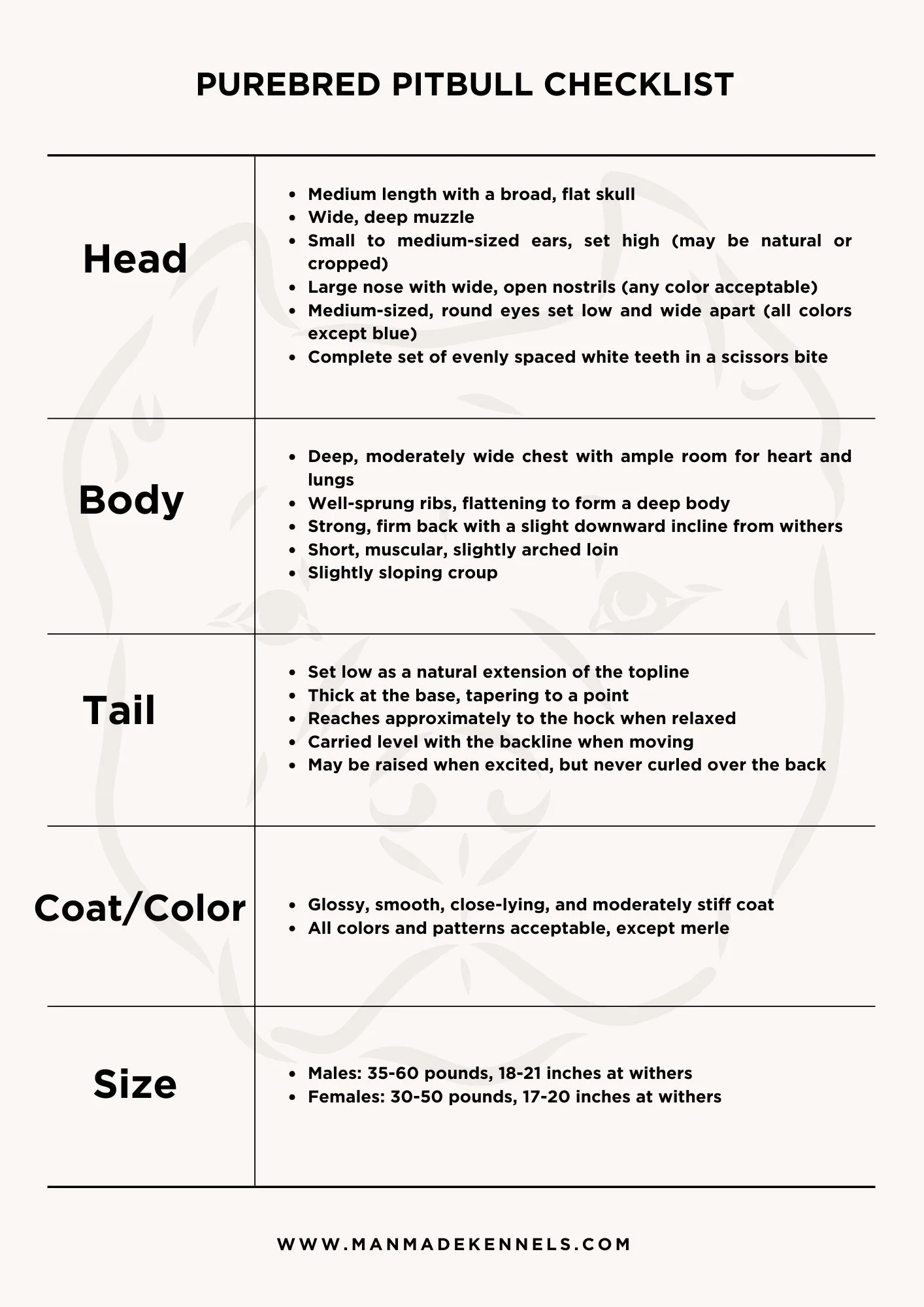
How do you know if a pitbull is purebred?
Identifying a purebred Pitbull can be a challenging task, as several breeds fall under the "Pitbull" umbrella. However, there are some key physical characteristics and features that can help you determine if your dog is a purebred Pitbull.
One of the most distinctive features of a purebred Pitbull is their muscular, stocky build. They typically have a broad, square-shaped head, a short, smooth coat, and a strong, muscular neck. Pitbulls also have a distinctive facial structure, with a wide, square muzzle and pronounced cheekbones.
Another important feature to look for is the dog's ears. Purebred Pitbulls often have ears that are naturally upright or semi-erect, rather than floppy or drooping. Their tails are also typically short and stiff, and may be slightly tapered at the end.
Distinguishing APBTs from American Bully Dogs
Key Differences
- Body Structure:
- APBTs: Athletic, well-proportioned, never bulky or overly muscular
- American Bullies: Often more compact and muscular
- Head Shape:
- APBTs: Proportionate head, not overly large or broad
- American Bullies: Typically have larger, more pronounced heads
- Chest Width:
- APBTs: Moderate chest width, never wider than deep
- American Bullies: Often have wider chests
- Leg Length:
- APBTs: Longer legs, more athletic appearance
- American Bullies: Usually have shorter legs relative to body size
- Overall Size:
- APBTs: Medium-sized breed
- American Bullies: Can vary from standard to XL sizes
- Temperament;
- APBTs; Eager to please, enthusiastic, and generally good with people
- American bullies; often calm and confident, but may vary in energy levels
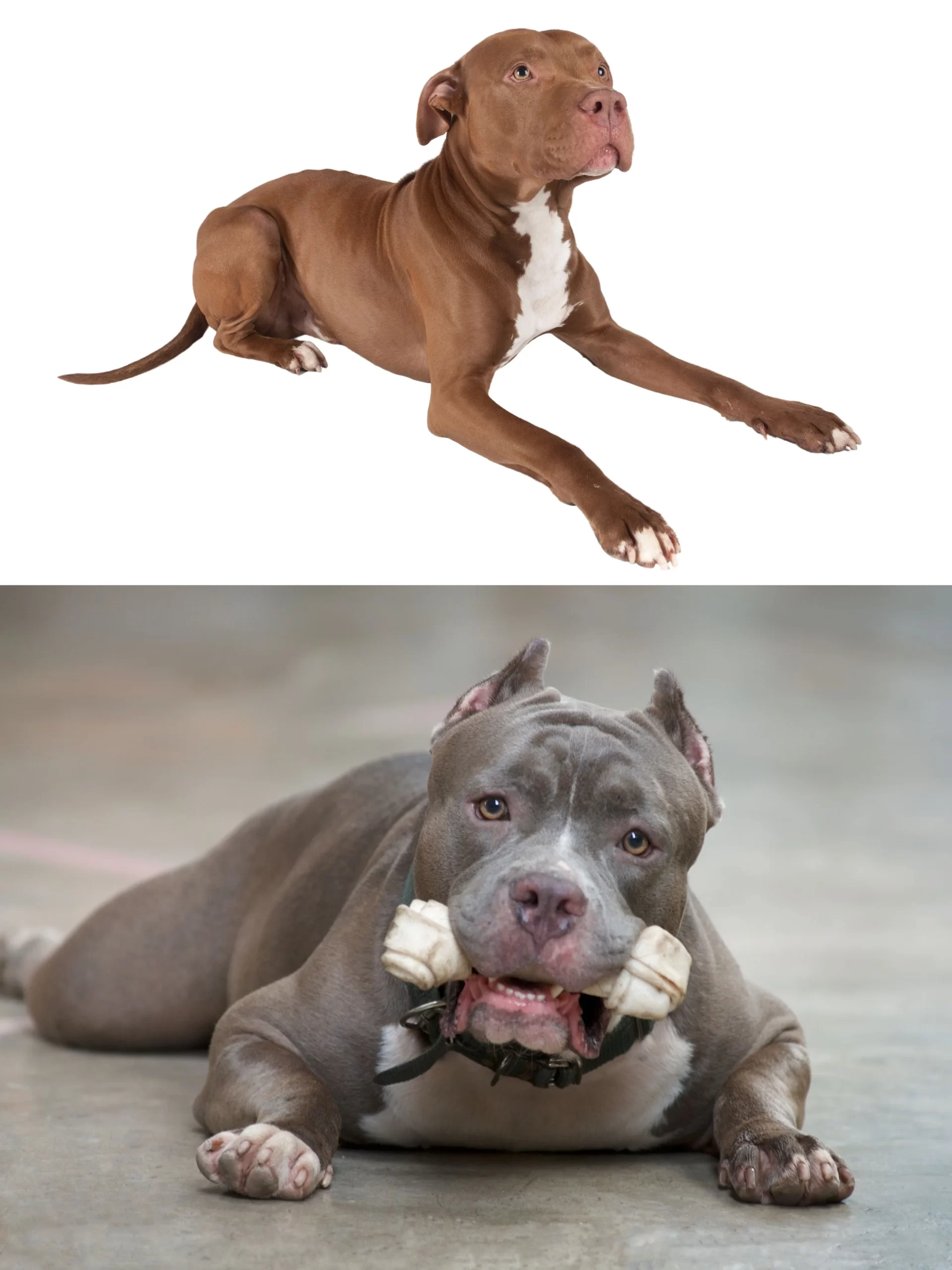
How to Know if My Dog is a Purebred Pitbull
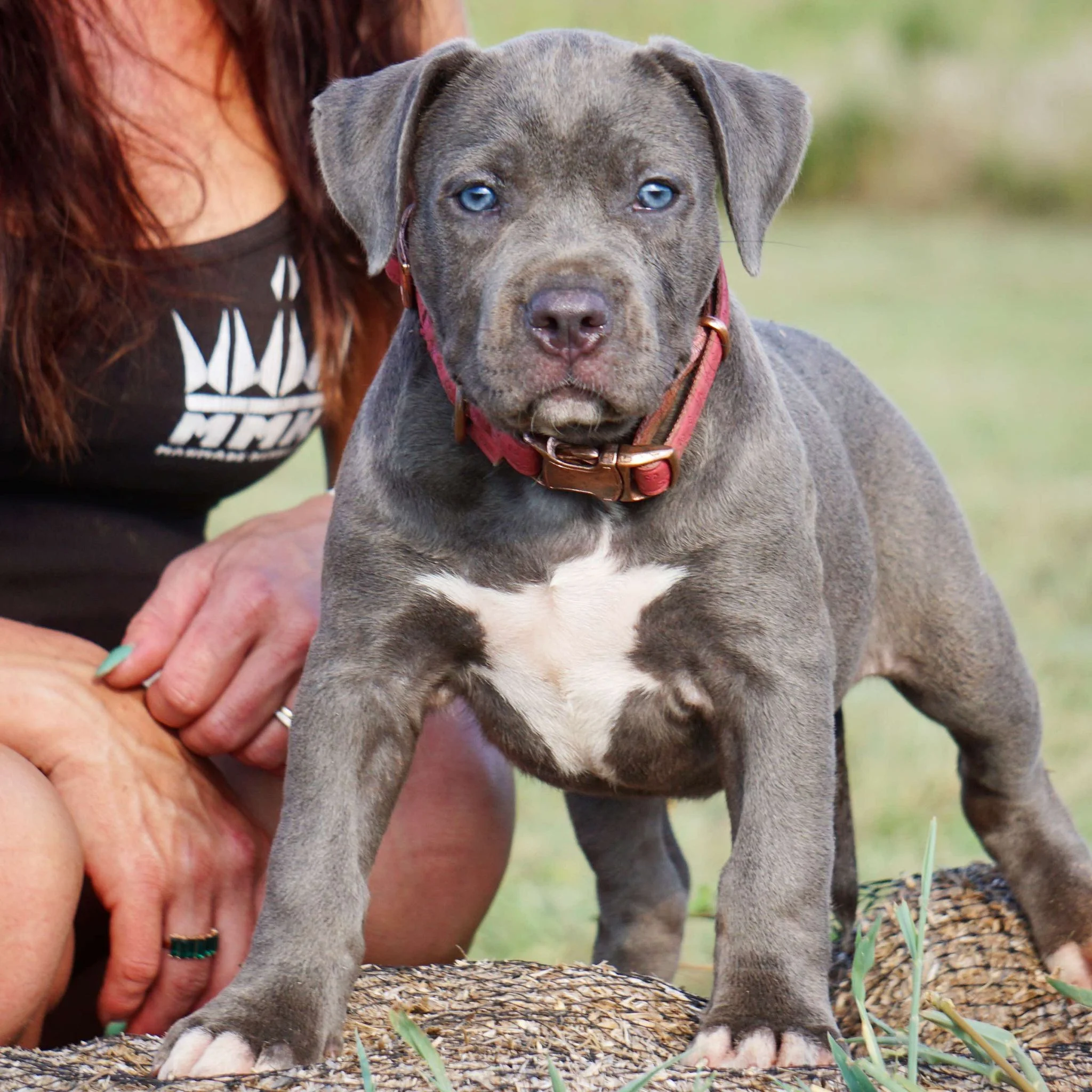
- Observe overall body proportions and athleticism
- Check for a moderate, well-balanced head shape
- Look for a deep chest that's not overly wide
- Ensure leg length is proportionate to body (about half the height at withers)
- Verify coat is short, smooth, and close-lying
- Confirm weight and height are within breed standard ranges
- Observe the puppy's energy level and eagerness to interact
Remember, while these guidelines can help, the surest way to confirm a purebred APBT is through proper documentation and registration with recognized kennel clubs like the UKC. Always obtain puppies from reputable breeders who can provide appropriate paperwork and health clearances.
How to tell if a dog is a pitbull mix?
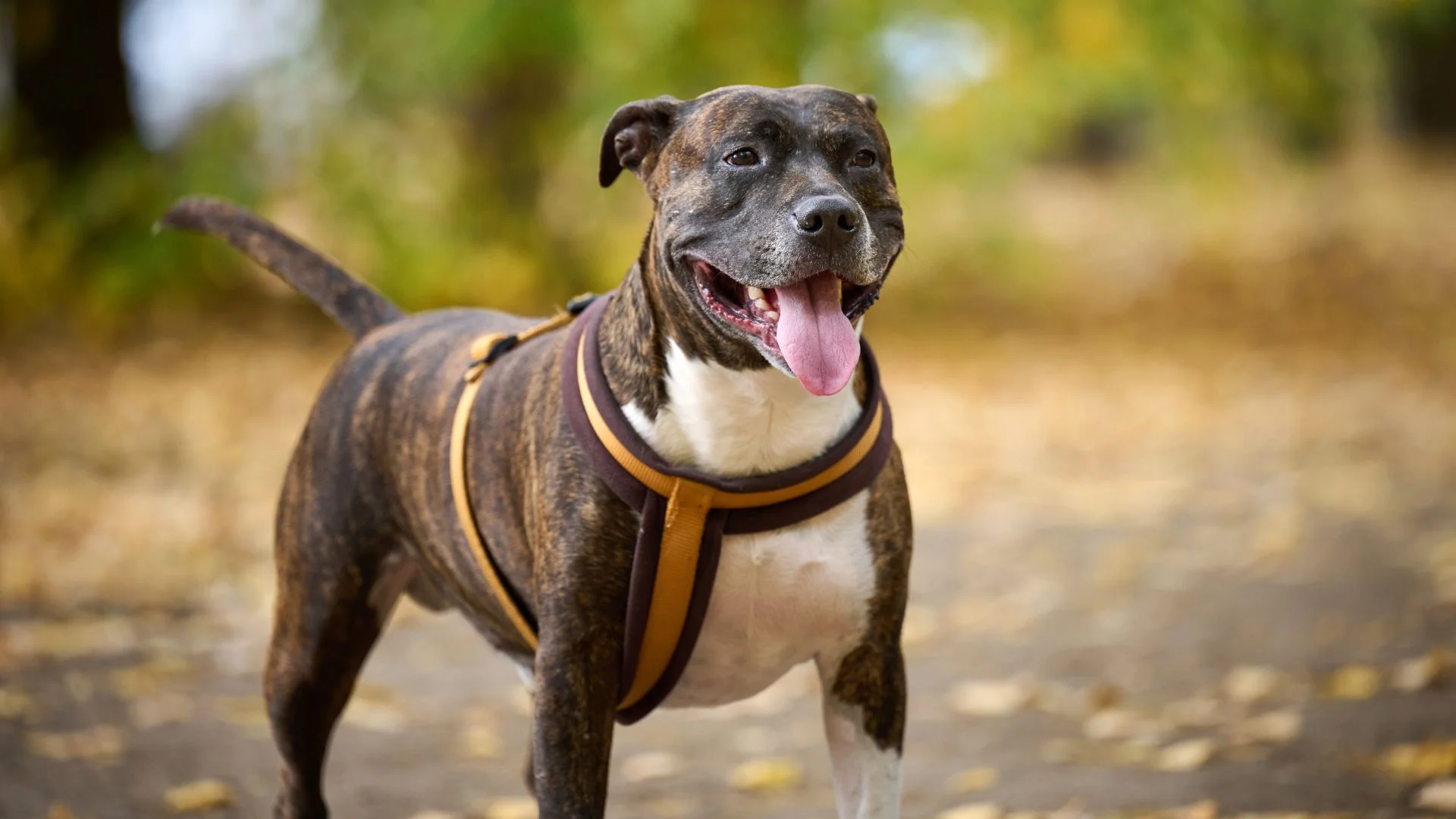
If your dog doesn't fit the classic Pitbull physical characteristics, they are likely a Pitbull mix. Several signs can indicate your dog has Pitbull ancestry, even if they don't fit the purebred mold.
One of the most obvious signs is the dog's overall build and muscular appearance. Pitbull mixes often have a stockier, more muscular frame than other breeds, even if their head and facial features are not as pronounced. They may also have a shorter, smoother coat than some other breeds.
Behavioral traits can also be a clue that your dog has Pitbull lineage. Pitbulls and Pitbull mixes are known for their high energy, loyalty, and affectionate nature. If your dog exhibits these traits and a strong, athletic build, it's a good indication that they have Pitbull in their ancestry.
It's important to note that not all Pitbull mixes will exhibit the same physical and behavioral characteristics. The specific traits of a Pitbull mix can vary depending on the other breeds involved in the mix. Genetic testing can be a valuable tool in determining the exact breed composition of your dog.
Physical characteristics of Pitbull mixes
Pitbull mixes can display a wide range of physical characteristics, depending on the other breeds involved in the mix. However, some common physical traits are often seen in Pitbull mixes.
One of the most noticeable features of a Pitbull mix is their muscular, stocky build. Even if the dog doesn't have the classic Pitbull head shape or facial features, they may still exhibit a powerful, athletic physique. Pitbull mixes may also have a shorter, smoother coat than some other breeds, with a variety of coat colors and patterns.
Another common physical characteristic of Pitbull mixes is their ears. While purebred Pitbulls often have upright or semi-erect ears, Pitbull mixes may have ears that are more floppy or rounded. The shape and size of the ears can vary depending on the other breeds in the mix.
The size and shape of the dog's head and muzzle can also be a clue to their Pitbull ancestry. Pitbull mixes may have a broader, more square-shaped head and a wider, more pronounced muzzle than some other breeds. However, the specific features can vary depending on the other breeds involved.
Genetic testing for breed identification
While physical characteristics and behavior traits can provide clues about a dog's ancestry, genetic testing can offer a more definitive answer to the question of whether your dog is a Pitbull mix.
Genetic testing for dogs has become increasingly accessible and affordable in recent years. These tests analyze the dog's DNA to identify the specific breeds that make up their genetic makeup. By comparing the dog's DNA to a database of known breed profiles, the test can provide a detailed breakdown of the dog's ancestry, including the percentage of each breed present.
For Pitbull owners, genetic testing can be particularly useful in determining whether their dog is a purebred Pitbull or a Pitbull mix. The test can identify the specific Pitbull breed (e.g., American Pitbull Terrier, American Staffordshire Terrier, Staffordshire Bull Terrier) and any other breeds that may be present in the dog's genetic makeup.
In addition to providing information about a dog's ancestry, genetic testing can also reveal important information about their potential health risks and predispositions. By understanding the dog's genetic makeup, owners can make more informed decisions about their care and take proactive steps to address any health concerns that may arise.
Behavior traits of Pitbull mixes
Pitbull mixes can exhibit a wide range of behavioral traits, depending on the specific breeds that make up their genetic makeup. However, some common behavioral characteristics are often associated with Pitbull mixes.
One of the most notable behavioral traits of Pitbull mixes is their high energy and playfulness. Pitbulls and Pitbull mixes are often described as active, athletic, and enthusiastic, with a strong desire to play and engage with their owners. They may be more energetic and demanding of attention than some other breeds.
Pitbull mixes are also known for their loyalty and affection towards their owners. They tend to be very devoted and protective of their families, and they often form strong bonds with their human companions. Pitbull mixes can make excellent family dogs, as they are generally friendly and tolerant of children.
It's important to note that, like any breed, Pitbull mixes can exhibit aggressive behavior if they are not properly socialized and trained. Responsible ownership and early socialization are crucial for ensuring the well-being of both the dog and the people around them. With the right training and socialization, Pitbull mixes can be loving, well-behaved companions.
Tips for training and caring for a Pitbull mix
Owning a Pitbull mix requires a unique set of considerations and responsibilities. As with any dog, proper training and socialization are essential for ensuring the well-being of both the dog and the people around them.
One of the most important things to remember when caring for a Pitbull mix is the importance of early socialization. Pitbulls and Pitbull mixes can be prone to aggression if they are not properly exposed to a variety of people, animals, and environments from a young age. Regular socialization can help to build the dog's confidence and reduce the risk of aggressive behavior.
In addition to socialization, it's crucial to provide Pitbull mixes with consistent, positive-reinforcement training. These dogs are often highly intelligent and responsive to training, but they can also be strong-willed and require a firm, yet gentle, approach. Obedience training can help to establish clear boundaries and expectations, and can also help to build the dog's confidence and trust in their owner.
Pitbull mixes also have unique exercise and activity requirements. These dogs are generally very energetic and require a significant amount of physical and mental stimulation to stay healthy and happy. Regular exercise, such as brisk walks, playtime, and interactive toys, can help to keep Pitbull mixes physically and mentally engaged.
Read our Top 5 List of Pitbull Workouts for Health and Fitness
Common health issues in Pitbull mixes
While Pitbulls and Pitbull mixes can be healthy, robust dogs, some common health issues are associated with the breed and its mixes. Understanding these potential health concerns can help owners to be proactive in their dog's care and to make informed decisions about their pet's well-being.
One of the most common health issues in Pitbull mixes is hip and elbow dysplasia. This is a genetic condition that can lead to joint pain, arthritis, and mobility issues. Regular veterinary checkups and screenings can help to identify and manage this condition.
Pitbull mixes may also be prone to certain skin and coat conditions, such as allergies, hot spots, and skin infections. Proper grooming, diet, and veterinary care can help to prevent and manage these issues.
In addition to physical health concerns, Pitbull mixes may also be susceptible to certain behavioral and mental health issues, such as anxiety, aggression, and fear-based behaviors. Proper socialization, training, and management can help to address these concerns and ensure the dog's overall well-being.
Pitbull mix owners need to work closely with their veterinarian to monitor their dog's health and to address any concerns or issues that may arise. Regular check-ups, preventative care, and a proactive approach to their dog's health can help to ensure a long, healthy, and happy life for Pitbull mixes.
Conclusion
Identifying whether your dog is a purebred Pitbull or a Pitbull mix can be a fascinating and rewarding journey. By examining your dog's physical characteristics, behavior traits, and genetic makeup, you can gain a deeper understanding of their ancestry and the unique blend of breeds that make up their genetic makeup.
Whether your dog is a purebred Pitbull or a Pitbull mix, it's important to approach their care and training with the same level of responsibility and dedication. Proper socialization, training, and management are essential for ensuring the well-being of both the dog and the people around them.
By understanding the unique needs and potential health concerns of Pitbull mixes, you can take proactive steps to ensure your furry friend lives a long, healthy, and happy life. With the right care and attention, Pitbull mixes can make wonderful, loyal, and affectionate companions.
So, embrace the mystery and diversity of your dog's heritage, and enjoy the journey of discovering their true identity. With the right information and resources, you can confidently identify if your dog is a purebred Pitbull mix and provide them with the care and support they need to thrive.
I am a highly skilled content writer and SEO expert with a passion for helping small businesses succeed in the digital world. With my extensive knowledge of the latest SEO techniques and strategies, I have successfully assisted numerous clients in improving their website rankings, generating more leads, and driving a significant increase in website traffic.
As a professional content writer and SEO expert, I am confident in my ability to contribute significantly to the success of small businesses. If you are seeking a results-driven, highly skilled digital marketer who can help you increase your ranking, convert new leads, and see a substantial improvement in website traffic, I would welcome the opportunity to collaborate with you.
Website: https://manmadewebsites.com/
Email: hello@digitalmarketingchap.com

